Choosing vinyl plank flooring for stairs means considering more than just the aesthetic appeal of hardwood or stone finishes at a more affordable price. Installing vinyl on stairs presents unique challenges, such as precise cutting to fit the shapes of stair treads and risers and the need for secure attachment to handle the high foot traffic typically seen on stairs.
The process also often includes the installation of stair nosing to finish the edge of the steps, which is not a standard requirement for flat surface flooring. This guide aims to walk you through these specific considerations, providing the necessary insights to achieve a successful installation that combines appearance, safety, and longevity.
Can You Install Vinyl Plank Flooring on The Stairs?
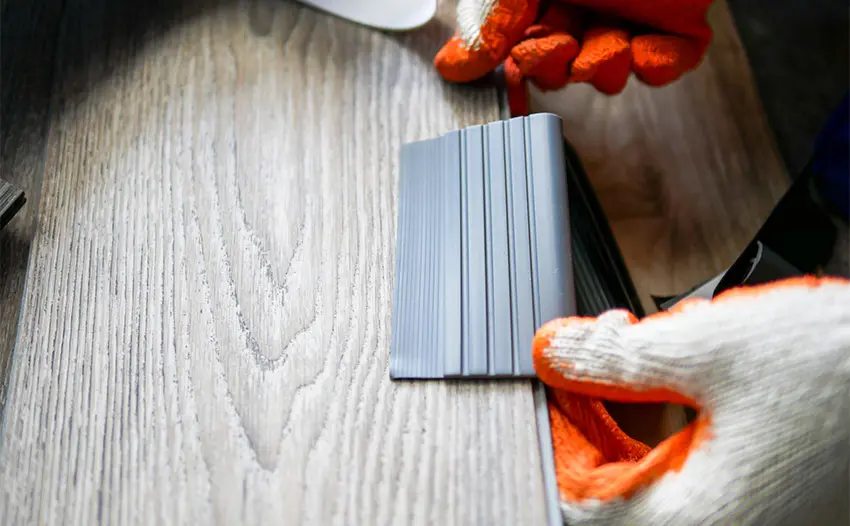
The short answer is- yes, you can install vinyl plank flooring on the stairs. Putting vinyl plank on stairs is not only feasible but often a wise choice for several reasons. Stairs are one of the highest traffic areas in any building, subject to constant wear and tear. Stairs endure a lot of foot traffic, making the need for durable flooring important.
Vinyl plank stands up to this challenge with its strong construction, maintaining its look under frequent use. Its ability to replicate more expensive flooring options like hardwood or stone at a lower cost adds to its suitability for staircases.
It’s worth noting that installing flooring on stairs often incurs higher costs due to the detailed work required in measuring, cutting, and fitting each piece, along with adding components such as stair nosing for a finished look and safety.
Despite these extra steps, the benefits of vinyl, including its low maintenance and resistance to moisture, make it a highly practical choice for stairs. In areas with significant foot traffic, the durability and ease of care offered by vinyl plank flooring prove especially beneficial, making it a preferred option for stair installations.
Best Brands of 2024
Which Type of Vinyl is Best for Stairs?
But not all vinyl planks are created equal, especially when you’re dealing with stairs. You’ll want to zero in on two key features: the wear layer and the core type. The wear layer is your frontline defense against the daily stampede of feet. A thicker wear layer means your stairs will stand up better to constant use, keeping them looking fresh for longer. It’s worth your time to check out some reviews to see which brands offer the best protection.
Then, there’s the core of the plank to consider. If you’re after a bit of cushioning underfoot, making each step a bit softer, WPC (Wood Plastic Composite) core vinyl planks are a great choice. They’re known for being kinder on your joints, with brands like COREtec leading the way, though they’re far from the only option out there.
However, if your stairs are a major thoroughfare, bombarded by kids and pets all day, you should lean towards an SPC (Stone Plastic Composite) core. These are tougher and more resilient, designed to handle heavy-duty traffic without batting an eyelash.
In the end, picking the right vinyl for your stairs means balancing the need for toughness with a touch of comfort, ensuring your steps can handle the hustle and bustle of daily life while still being pleasant to walk on.
Special Pieces for Vinyl Stair Installation
When decking out your stairs in vinyl, knowing the parts of the staircase is key. The riser is the vertical part—think of it as the part that “rises” between each step. The tread is where you step, the horizontal part that takes the brunt of your foot traffic. And then there’s the nose or bullnose, which is that slightly protruding rounded edge at the front of each step, giving your stairs a finished look.
Now, onto the fun part—special pieces for your vinyl stair makeover. Top-notch vinyl plank brands have got you covered with all sorts of extras, including various moldings and transition pieces that match your flooring choice perfectly. For stairs, this means you can get matching bullnoses to cap off each step with style, ensuring a cohesive look from top to bottom.
But what about the risers and treads? Well, you can typically use standard vinyl planks for these parts, making the installation process smoother. Plus, some brands, like Shaw, step it up by offering specialty vinyl treads designed specifically for stair use. These are engineered to handle the heavy footfall, ensuring your staircase not only looks great but is built to last.
So, when planning your stair renovation, make sure to check out the specialty pieces available from your chosen vinyl brand. These extras are the secret to a seamless and professional-looking stair transformation.
Finding the Perfect Vinyl Bullnose for Your Stairs
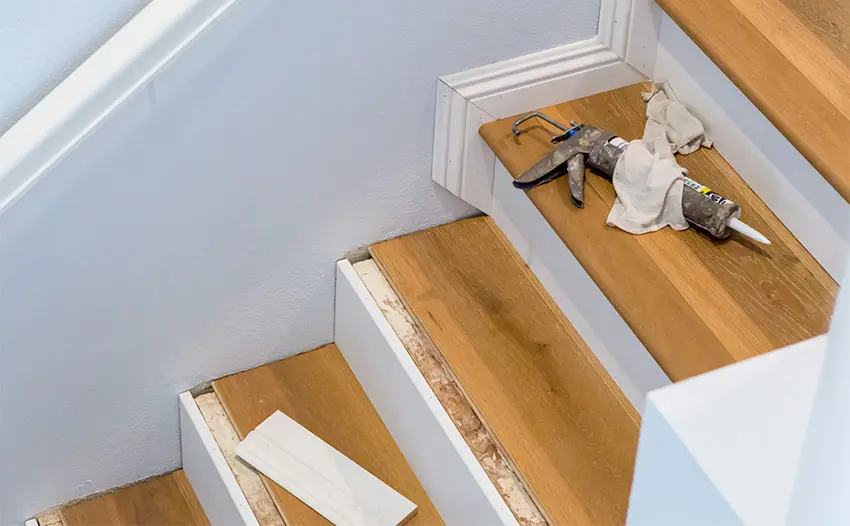
When it comes to giving your staircases a polished look with vinyl, choosing the right bullnose is crucial. Bullnoses are those neat pieces that cap off the edge of each step, and they come in various shapes to suit your style. You’ve got options from square-edged for a modern, crisp look to fully rounded for a classic, smooth finish. There are also half-rounded types for a bit of both worlds and even designs with zero overhangs that simply protect the step’s edge without extending beyond it.
The choice of bullnose really boils down to your personal taste and the overall aesthetic of your space. If safety is a top priority, especially in high-traffic areas or homes with little ones, consider non-slip options to add an extra layer of precaution.
Aluminum Stair Nosings as a Vinyl Alternative
With the recent supply chain hiccups affecting everything, including flooring accessories, finding matching vinyl plank stair nosing might be more of a challenge than anticipated. But don’t let that stall your stair renovation plans.
Aluminum stair nosings present a reliable and readily available alternative. They might lend a more industrial vibe to your stairs, but if that aligns with your home’s style, or if the staircase’s appearance isn’t your main concern, aluminum could be a smart, stylish choice. Plus, it’s a practical temporary solution—you can always switch to matching vinyl nosings later when they’re back in stock. This way, you keep your project moving forward without compromising on safety or functionality.
Vinyl Plank Flooring on Stairs: FAQs
Embarking on a stair renovation project with vinyl plank flooring can stir up many questions. Let’s tackle some common queries to set the record straight and ensure you’re fully equipped with the knowledge you need before diving into the installation process.
Can vinyl plank flooring be safely used on stairs?
Absolutely! Vinyl plank is a durable, versatile choice for stairs, offering the resilience needed to handle high foot traffic areas. Its various designs and textures also provide ample options for matching your home’s decor.
What are the main considerations when installing vinyl plank on stairs?
Important factors include selecting the right type of vinyl (LVP on stairs is recommended), ensuring the planks have a suitable wear layer and core for durability, and choosing the appropriate bullnose for a finished look. Proper measurement and installation are crucial to accommodate the unique angles and surfaces of stairs.
Do I need special pieces for stair installation?
Yes, you’ll likely need stair-specific pieces like bullnoses or nosings to cap the edges of the steps for a polished appearance and added safety. Some brands offer matching accessories for a seamless look.
Is it difficult to install vinyl plank flooring on stairs?
While it’s more challenging than laying vinyl on a flat surface, it’s definitely doable, especially with some DIY experience. Precision in cutting and fitting the planks to each stair’s dimensions is essential.
Can I use regular vinyl planks for the risers and treads?
In most cases, yes. Standard vinyl planks can be used for both risers and treads, but ensure they are cut accurately to fit. Some manufacturers also offer specialty treads for stairs.
What if I can’t find matching stair-nosing?
In case of supply issues, you can opt for a temporary solution like aluminum stair nosing, which offers a different aesthetic but can be replaced with matching vinyl nosing later.
Are vinyl stairs slippery?
Vinyl stairs can be slippery, especially when wet, but many vinyl plank options come with textured surfaces to mitigate this risk. For added safety, you can look for vinyl planks specifically designed with non-slip features or consider adding a stair runner if slipperiness is a concern.
Can I install narrow-width vinyl plank flooring on stairs?
Yes, you can install narrow-width vinyl plank flooring on stairs. The width of the planks is more about aesthetic preference and ease of installation. Narrow planks might require more cuts and adjustments, but they can create a unique look and feel for your staircase.
How do you transition vinyl plank flooring to your stairs?
Transitioning from vinyl plank flooring to stairs involves using a nosing piece at the top step to ensure a smooth and flush transition. This nosing should match your flooring and be installed carefully to prevent any tripping hazards, maintaining a cohesive look from your floor to the staircase.
What’s the best adhesive for vinyl plank flooring on stairs?
The best adhesive for vinyl plank flooring on stairs is a pressure-sensitive adhesive specifically designed for vinyl flooring. It provides a strong bond, allowing for some flexibility with foot traffic while ensuring the planks stay securely in place.
Is vinyl environmentally friendly enough to go in a high-use area like stairs?
Vinyl is a synthetic material, and its environmental impact depends on various factors, including the manufacturing process and lifecycle management. Many manufacturers are making strides toward more sustainable practices, offering vinyl products that are recyclable, made with recycled content, and certified for low voc emissions. For high-use areas like stairs, consider looking for eco-friendly vinyl options to minimize your environmental footprint.
Step-by-Step Guide to Installing Vinyl Plank Flooring on Stairs
Diving into a stair renovation project with vinyl plank flooring might seem like climbing a mountain, but it’s more like a walk in the park once you get going. Vinyl plank is one of the friendliest flooring options for DIY enthusiasts, sidestepping the complexities of grain directions or carpet stretching that come with other materials. It stands out for its straightforward installation process, even on the nuanced surfaces of stairs.
Gathering Your Tools:
Before you start, arm yourself with the right tools to ensure a smooth installation. You’ll need a jigsaw equipped with an 80-tooth blade for precise cuts, a caulking gun for adhesive application, a carpenter square and tape measure for accurate measurements, and, of course, plenty of suitable adhesive. A clean subfloor is the foundation of a successful installation, so make sure it’s spotless before you begin.
Step 1: Installing the Stair Riser:
Kick things off by measuring the riser—the vertical part of the step. Measure twice to cut once, ensuring you avoid waste and fit the vinyl plank perfectly. Apply adhesive to the plank’s back and press it against the riser. For added stability, you can also secure the corners with nails or screws.
Step 2: Tackling the Tread and Nose:
Next up is the tread, where the foot action happens. Measure meticulously, remembering that each tread might have slight variations in size. If your vinyl plank doesn’t come with an attached nose, measure it separately, ensuring it sits flush with the plank for a seamless look. Cut the plank and nose to size, and if necessary, use multiple plank pieces to cover the tread width evenly.
Step 3: Fitting It All Together:
Do a dry run before gluing anything down. Lay out the tread and nose to check for a perfect fit without overlaps or gaps. Then, apply adhesive in an S pattern to the tread plank, pressing it firmly in place. The nosing gets a coat of glue too, but consider sanding its underside first for a stronger bond. Place it carefully along the stair’s edge, ensuring it’s flush with the plank.
Wrapping It Up
Vinyl plank flooring on your stairs isn’t just an extension of your stylish floors; it’s a statement that elevates every corner of your home. From the welcoming vibe of your entrance hall to the cozy pathway leading to your bedrooms or down to the basement, vinyl plank stairs are suitable for any setting, bringing durability, style, and ease of maintenance along for the ride.
We hope this guide has illuminated the path to your stair renovation project and answered any lingering questions. For more insights into the world of flooring, don’t miss our other articles, where we explore a myriad of topics to help you on your journey to the perfect floors. Here’s to a successful flooring adventure, and remember, the best transformations start with a single step!
About The Author

Courtney Daily
February 11, 2024
Courtney is a freelance writer who wears many other hats: kindergarten teacher by day, Broadway diva in the shower. She is a transplant Hoosier who originated in New England. When she isn't writing in her spare time, you will find her reading history books, arguing with her latest knitting project, or being beaten by her kids at most games.
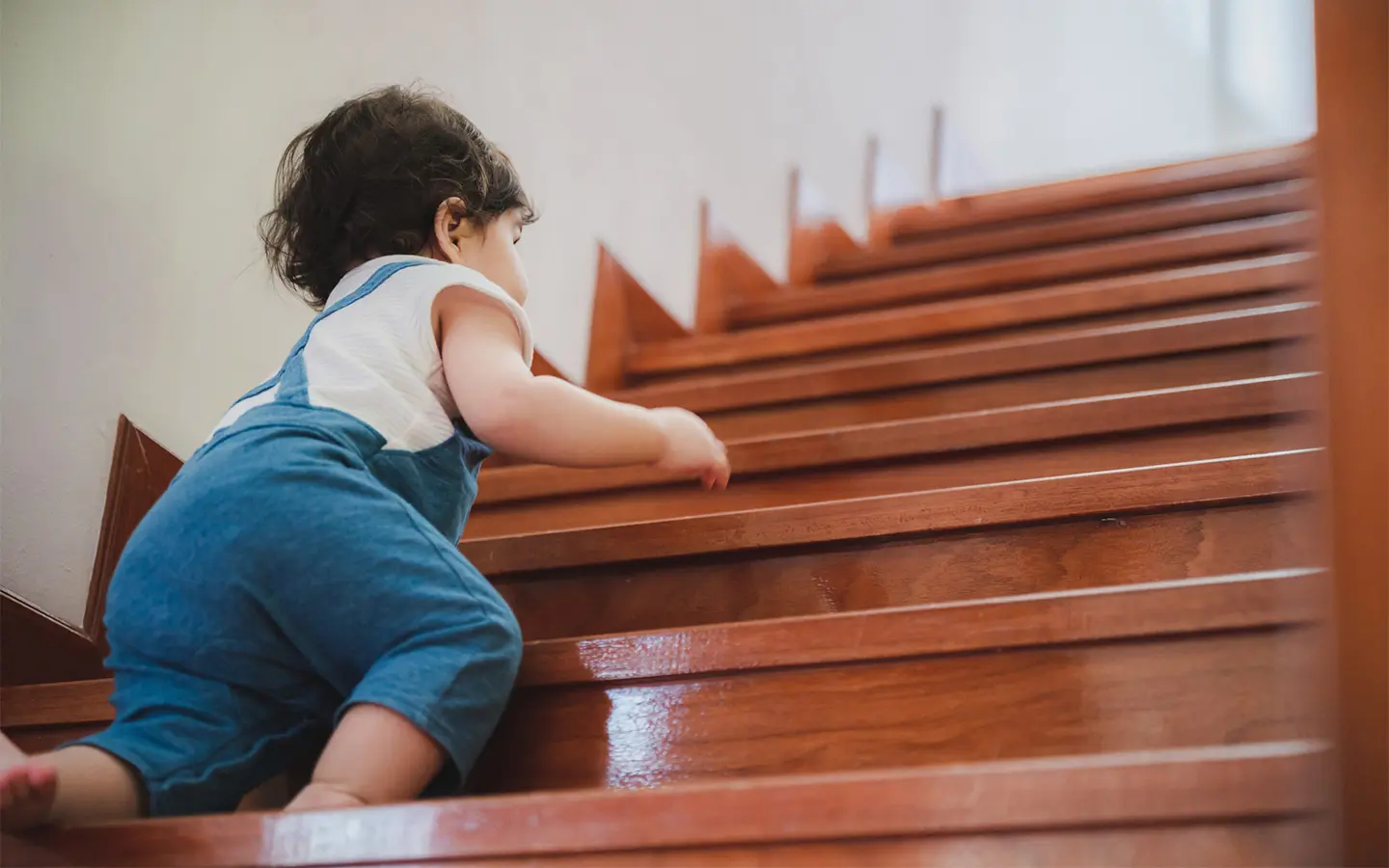
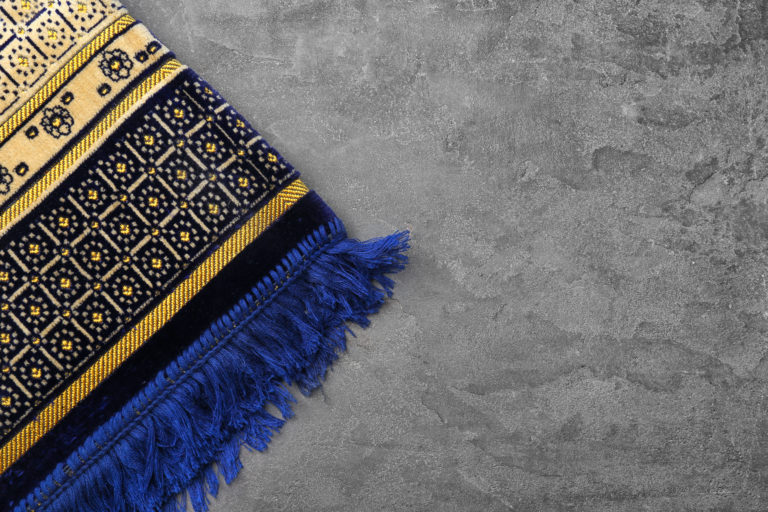
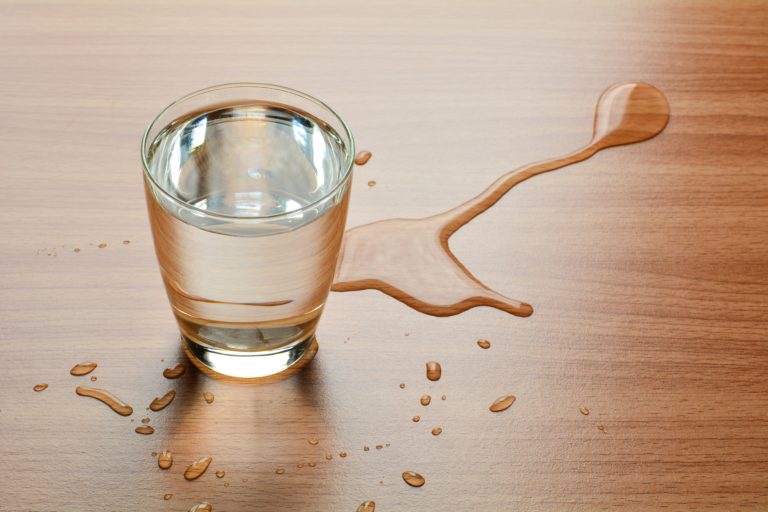



6 comments
Brian
Great article that lays an excellent foundation for consumers and professionals! There are a lot of varied opinions and confusion on this subject. Excellent info.
Gina Parson
Hello, I just had vinyl plank flooring installed on my stairs. They used one plank and a bullnose piece. I used a Shaw product. The bullnose piece did not match exactly, the colors are way off. I found out from Shaw they used a coordinating bullnose, not an exact match. I wish I would have known this before the install. But my main issue is that they used nails from a nail gun all along the front of the bullnose. The nail holes looks absolutely terrible. I would love to send you a picture. Anyway, I told the installer that I was not happy with the installation and the nail holes look terrible. I was told that is how it is suppose to be done. I called Shaw and they said the bullnose is to be glued down and not nailed. Can you please give me your recommendation regarding this issue.
KM
Should you use vinyl with or without attached underlayment?
Bo Arnold
Hi there, the answer is a very unsatisfying “it depends”. For each individual project, the answer might be different. We recommend reaching out to your local flooring store to get an expert’s opinion. Thanks for reading!
Balaji Jeevan
The best write up I have seen about this subject. Thanks!
Bo Arnold
Thanks for reading!